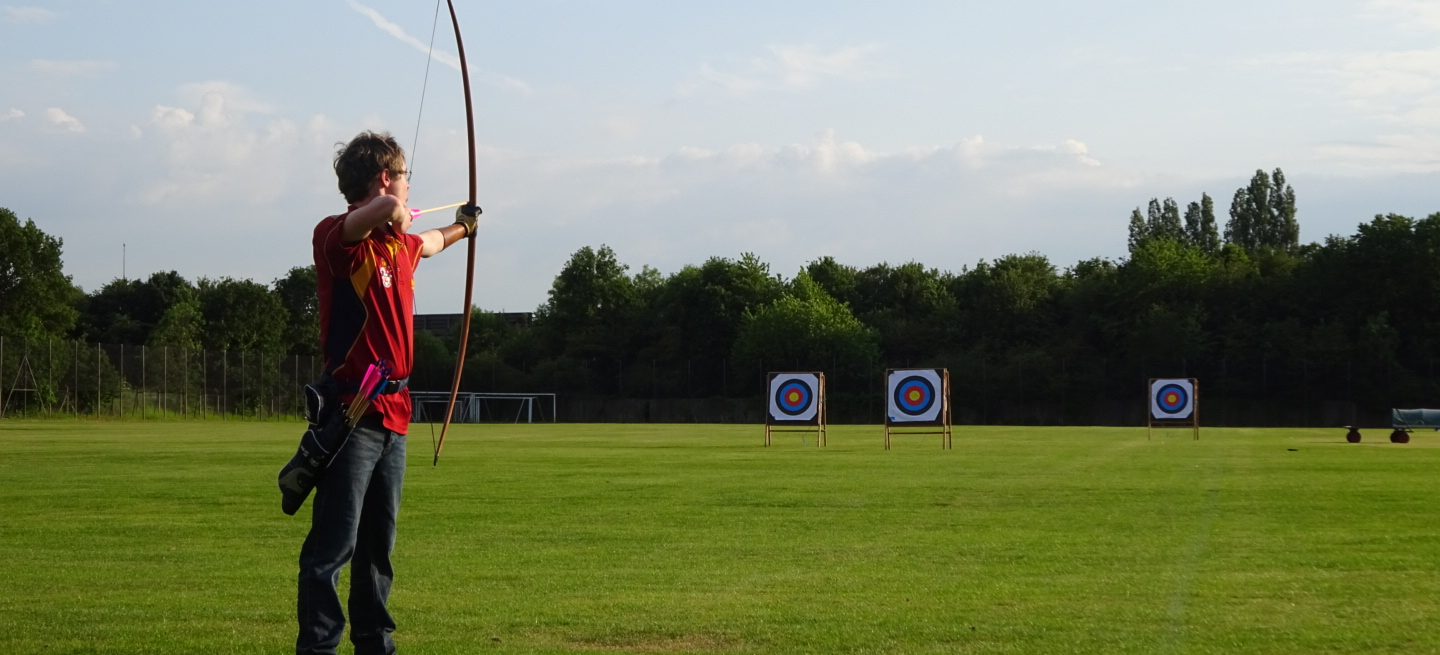The English Longbow
What is the English Longbow? A stick.
Now I’ve got that out of the way, a Longbow is a traditional English bow that effectively is a piece of wood with a string that bends back towards the archer as it is drawn. The limbs usually have a round or D-shaped cross section. An English Longbow has no shelf, which is why it can be shot by both right handed and left handed archers. However, there are some manufacturers which define one side with which the bow should be shot.
Historically this type of bow has been used very successfully by the English against the French in the Hundred Years’ War. The bows allow to shoot heavy arrows with maximum efficiency. Nowadays, they follow the design mainly used for leisure activities in the Victorian era.
Draw length of Longbows
Longbows have a set upper draw length. Newly bought, they can be shot as a have a go bow by anyone, without worrying too much, however once someone has shot the bow for a while, it will tend to settle to that person’s draw length and therefore snap if being overdrawn. That means if a bow is shot with a draw length of 29” for a while, and a 25” archer picks it up, it will usually be ok, although it won’t be particularly efficient for a while until the Longbow settles to 25”. If a 28” archer comes along afterwards and starts shooting it, then the bow will break. However, if the 28” pulls it to 25” to begin with, leaves it strung up for an hour, comes back then pulls it to 26” (and repeat this process), then it should be ok.
Storage and upkeep
It is best to store Longbows flat on the ground if possible, so for instance under someone’s bed if they shoot it regularly. That way the wood is not put under any stress when not strung up. One advantage to composit bow is that heat does not affect it much.
Wooden bows cannot be left to dry wet, as any nicks in the varnish would cause a deterioration in the bow. Every now and then the bow needs to be varnished to seal over any of these cracks.
Flatbows
The Flatbow or American Longbow is in the UK commonly called AFB (for American Flatbow). While they are famous for the fact that they were used by the Native Americans, Flatbows have been found all over the world. The design differs from the English Longbow in the fact that the limbs are flat. This makes them much more robust to sudden draw length variations and increases their lifespan. In return they are not as efficient when used with heavy arrows, making them more of a hunting (or target) bow than a warbow.
Modern Flatbows are built with a slight reflex-deflex design (curved limbs) and glass veneer on top of the limbs. Most of them also have a shelf which holds the arrow while shooting. That increases the durability and shooting comfort of the bows, which is why the Flatbow is a very popular target bow. Unfortunately, there is no Flatbow class in UK target shooting, which makes it difficult to join competitions. It is possible in Field Archery, however.
Cheap Flatbows are usually still very thick, giving them strong handshock and low arrow speed. If you buy one, make sure it has tapered limbs that become thinner towards the end, minimising the mass that the bow has to accelerate.
Traditional Recurves
Recurve bows share many properties with Flatbows. The main difference is that the limbs are strongly curved forward, so that the string touches the limbs when strung. This allows the bow to be much shorter than longbows but still give a smooth behaviour when drawn. While traditional Longbows are somewhere around 70” long, Recurves can be 60” and shorter. This, together with different acceleration dynamics, makes Recurves very fast bows. The only disadvantage they have is that the recurved limb is more prone to torque and vibrations, which can especially be noticed on cheap wooden Recurves. This deficit can be reduced by adding expensive carbon layers or by using less twisty bamboo instead of maple.
Traditional recurves are, apart from the glass veneer, mostly restricted to natural materials like wood and Mycarta, the latter being a heavy, stable material made out of resin soaked fabric. Like Olympic Recurves, traditional Recurve bows have a ‘pistol grip’ that makes it easier to hold the bow in a relaxed manner than the straight grip of Longbows. They can also be bought as take-down versions
Other bow types
Hybrid bows are a very new type of bow that is a mix between a Flatbow and a Recurve. The limbs have a maximum reflex-deflex design so that the string just does not touch the limb when strung. This allows the bow to be short and fast, but at the same time keeps the stability and vibration-free nature of a longbow.
Horse bows are, as the name says, designed to be shot from horseback. They are therefore very short, requiring extremely recurved limbs to allow a smooth draw. Historically they were also designed to shoot heavy arrows, such as the Mongols did against the European knights, which is why many have stiff, heavy limb tips. Nowadays, they are mostly made out of fibreglass instead of wood to make sure they endure the extreme limb curvature.


